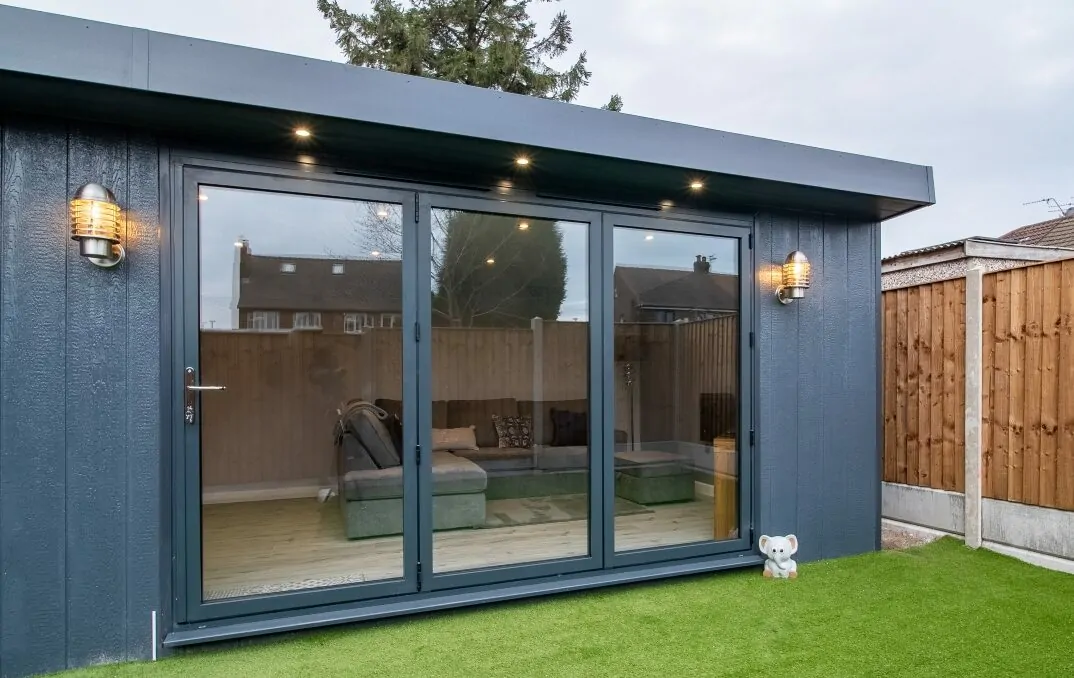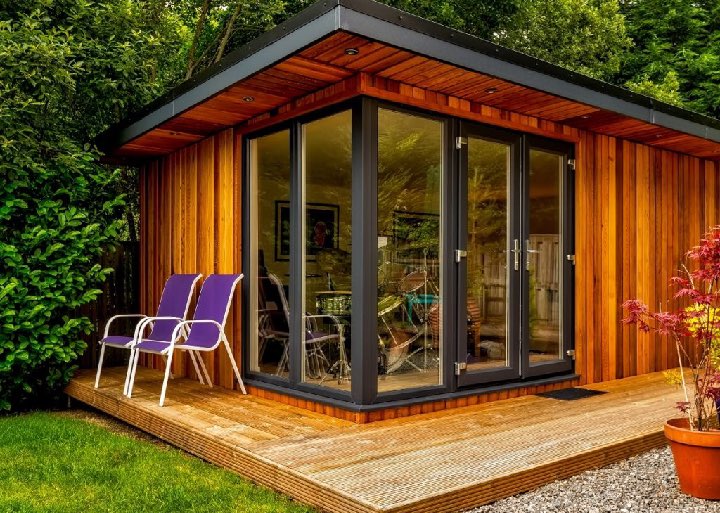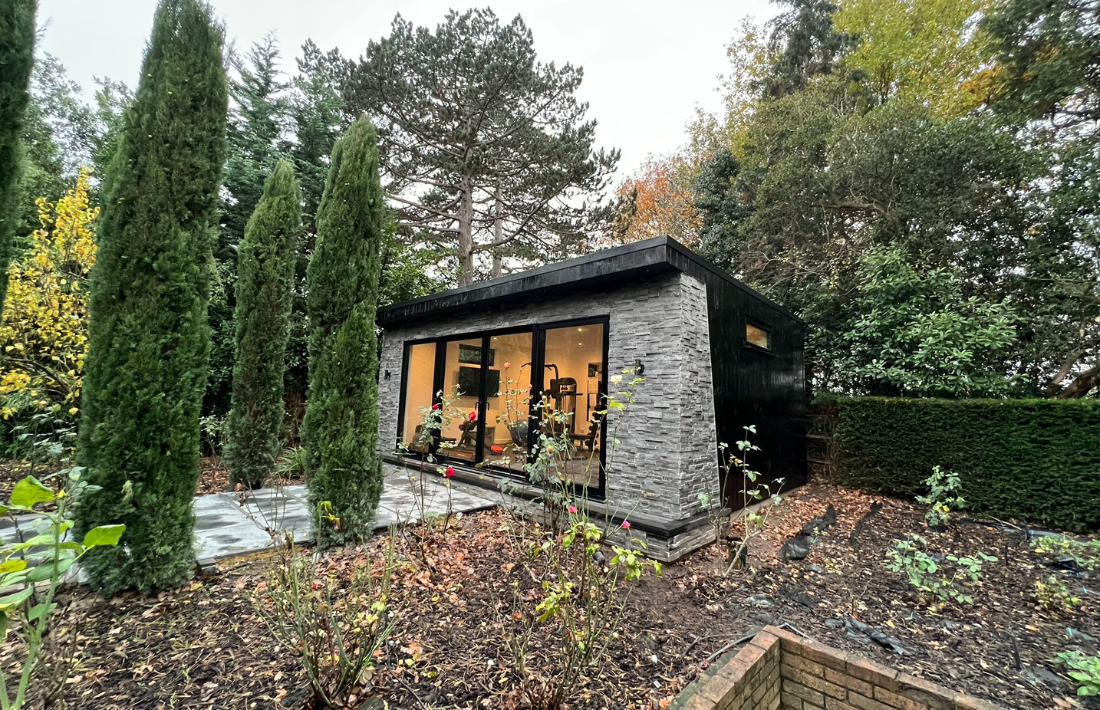If you are considering building garden rooms or conservatories, outhouses extension or garden offices, specific size restrictions typically determine if you require planning permission. Here is a list of typical size requirements that could require you to seek permission for planning.
Planning permission is required for detached outbuildings if it exceeds 50% of the total land space surrounding the house (excluding the footprint).
Height Restrictions
Buildings of one story The maximum eaves must not exceed 2.5 metres, and for roofs with two pitches, or any other roof type it shouldn't be more than 4 meters.
The maximum height of buildings that are less than 2 meters tall is 2.5 meters.
Floor Area:
Building regulations may be required for structures that have a larger floor area than 30 square meters even if planning permission is not required.
Proximity to boundaries
If the building is not more than 2 meters away from the boundary, a planning permit is required if the structure's height is more than 2.5 metres.
Building Use
The size of garden rooms isn't the only thing to consider the purpose of their use could affect whether planning approval is required. Planning permission could be required in the event that, for example the structure is planned to be used for residential or business space.
Permitted Development Rights:
In the case of Permitted Development Rights (which allow for certain kinds of work to be carried out without the need for a complete application) Certain size restrictions and conditions apply. These rights differ based on whether the property is located in a conservation area or subject to other restrictions.
Extensions and Conservatories:
The maximum depth for a one-story rear extension is usually 4 meters in detached houses and 3 meters for semi-detached homes or terraced houses. The depth can be increased to 8 meters or 6 meters in the Neighbourly Consultation Scheme if certain conditions are met.
The rear extension of one-story houses must not be more than 4 meters.
Side Extensions
The maximum height of an extension sideways should not be more than 4 meters.
Volume Restrictions
In some areas, like conservation zones, or Areas of Outstanding Natural Beauty Any construction that is greater than 10% or expands its volume by 50 cubic meters could need planning approval.
Front Extensions
Extensions that extend beyond the front of the house that faces the road may need planning permission.
It's essential to verify with the local authorities, since regulations vary based the location you reside in and what conditions are present on the property. Even if your property doesn't require planning permission, a building regulation approval may still be required to ensure the integrity of your structure. Take a look at the recommended garden room conservatories for site examples including garden rooms near me, garden office hertfordshire, best heater for log cabin, costco garden rooms, ground screws vs concrete, what size garden room without planning permission, small garden office, costco outhouse, outhouse garden, Tring garden rooms and more.

What Planning Permits Are Required For Gardens, Rooms Etc. With Regard To The Impact On The Environment?
Planning permissions can be affected by the environmental impact of garden rooms, conservatories and outhouses. Consider these key environmental factors:
If the proposed structure would alter wildlife habitats in your region, like local hedgerows, trees or ponds then you will need permission to plan the project. In order to reduce and determine the effect the environmental impact, an eco-survey could be required.
Protected Species & Habitats
Permission is required when there are protected species on the site (e.g. bats, newts or other species), or if they are in protected habitats or near (e.g. Sites of Special Scientific Interest SSSI). To ensure their protection, specific measures must be implemented.
Tree Preservation Orders
A planning permit is required for any proposed construction that involves the removal or alteration of trees protected by TPOs. Local authorities will assess the impact of any proposed changes and may require replacement planting or mitigation measures.
Risk of flooding and Water Management: Risk and Water Management:
For developments in flood-prone areas or in close proximity to water bodies, planning permission is required. A study of the flood risk (FRA) may be required to make sure that the structure is capable of draining and doesn't increase flood risk.
Sustainability in construction:
You might require approval for your plans to ensure sustainable construction and materials. It is crucial to think about the efficiency in energy use of the materials, their insulation and their carbon footprint.
Surface water runoff and Drainage
A key consideration to consider for the environmental is how the new structure will affect drainage and runoff from surface water. Planning permission ensures that proper drainage systems are installed to avoid waterlogging or flooding.
Soil and Land Stability
Planning permission will be required if construction is likely to impact soil stability or soil quality. This could include issues such as erosion or subsidence of the soil, in particular on sloped areas.
Air Quality:
Planning permits are required for developments near industrial zones or major highways which could impact the local air quality. This ensures that pollution levels are within acceptable levels, and mitigation methods are in place.
Noise Pollution:
The permission to plan is required when you plan to use the garden extension or the room in a manner that could create significant noise (e.g. an instrument or workshop studio). The local authorities will assess the level of noise to assess the negative impact on the nearby residents as well as the environment.
Waste Management:
The proper disposal of waste throughout construction and afterwards is vital. Planning permission allows for adequate waste disposal, recycling and the reduction of environmental impact.
Energy Efficiency:
Planning permissions can also include energy-efficiency requirements, such as using solar panels, high efficiency glazing, or green technologies. This helps reduce the environmental footprint.
Environmental Regulations
Environmental laws and regulations are applicable to every development including the UK Environmental Protection Act. Planning permission ensures that all legal obligations are met, and that the development is environmentally sustainable.
Planning permissions for conservatories or gardens and outhouses, office buildings and garden offices need to take into consideration various environmental aspects. It is crucial to talk with the local authorities before beginning the process of planning, to be able to understand the specific requirements. This will also ensure the building is eco-friendly and complies with all relevant regulations. Have a look at the most popular armoured cable for garden room for site examples including composite garden office, garden office, what size garden room without planning permission, garden office hertfordshire, garden office electrics, garden rooms near me, do i need planning permission for a garden room with toilet, best electric heater for cabin, garden room vs extension, what size garden room without planning permission and more.

Regarding Location Restrictions What Kind Of Planning Permission Are You Required To Build Gardens?
When planning to build garden rooms, conservatories, outhouses, garden offices, or extensions, location restrictions play a crucial role in determining whether permits for planning are required. Here are the most important location requirements to take into consideration.
If the structure is within two meters of the boundary line, it must not be taller than exceeding 2.5 meters. If the height of the building exceeds this limit then planning permission is required.
Front of the property:
Planning permission is typically required for any structure that is that are built on the front of the house's main elevation (the side that faces the front) since the permitted development rights do not allow for forward extensions.
Right-hand side of property:
Side extensions need to comply with the specific height and dimension limits and require planning permission often if they exceed the existing wall of the sidewall.
Rear of Property
There are size and height limits on rear extension extensions. If they exceed permitted development limits Planning permission is necessary.
Designated Zones
In National Parks (National Parks) and Areas of Outstanding Natural Beauty(AONB), and World Heritage Sites (World Heritage Sites), stricter control is in place. Planning permission is required for all new structures, regardless of their dimensions.
List of Buildings
Buildings listed on the list are subject to strict rules. Any construction or modification will require planning consent and listed building approval regardless of the location.
Green Belt Land:
Building on green belt land is heavily restricted in order to preserve open space. Permissions are usually required for new constructions or significant alteration.
Areas at risk of flooding
If the property is at risk of a high flood risk, there are additional regulations that apply. This is to ensure that the new construction doesn't increase the risk of flooding. You might need planning permission, or perhaps an assessment of flood risk.
Urban vs. Rural Settings
In cities, regulations differ from those found in rural areas. Rural homes, for example are likely to have more flexible limitations on the location and size of outbuildings. But, this may differ greatly.
Highways and Public Rights of Way
It could be necessary to seek planning permission if the structure is located near highways or public rights of way. This will ensure the construction does not hinder views, safety or access.
Shared Ownership Land, Leasehold Land, or
For properties that are leasehold or are part of a shared ownership scheme further permissions from the freeholder or the managing entity could be required. Planning permission may still apply depending on the local laws.
Nearby to Other Structures
The planning permission must be obtained when the proposed structure is constructed next to an existing structure or structure, in particular those that are on adjacent properties. This will ensure that there is no negative effect on adjacent buildings or land.
Contact your local planning authority for guidance that is specific to the location and circumstances of your home. Local laws can have a significant impact on regulations. It is important to follow all regulations to avoid legal issues or fines. Take a look at the top outhouse garden shed for website examples including myouthouse, outhouses for garden, ground screws vs concrete base, what size garden room without planning permission, costco garden rooms, garden room planning permission, composite summer house, costco outhouse, what size garden room without planning permission, armoured cable for garden room and more.
